By Sheldon C. Good
Mennonite Weekly Review
(Reposted by permission from Mennonite Weekly Review.)
CLICK HERE to view photo album
HARLEYSVILLE, Pa. — Though online social media should not replace face-to-face interactions, these tools can enhance ministerial leadership.
And social media are nothing more than tools, two consultants told a group of 30 ministry leaders at an educational gathering March 17 at Franconia Mennonite Conference Center.
Most often, social media include Facebook,?Twitter, blogs and online video.
“It’s providing amazing opportunities for pastoral care,” said Scott Hackman, a seminary student and a consultant with MyOhai, LLC.
But people have different views of social media’s functions and effects. The group of pastors described social media as connection, nuisance, virtual community, addicting, time-consuming and a new definition of friends.
Hackman, a former youth minister and salesman, shared how his journey with social media began.
“I was a stay-at-home dad, and I wanted to connect with others who were in a similar context,” he said. “I wanted to see if I could connect with people and actually engage with them.”
So Hackman created Dad Parlor, a Facebook page dedicated to create space for fathers to share and connect.
But a Facebook page — and social media overall — does not replaced the need for face-to-face interaction, he said.
In fact, Hackman believes social media enhance interpersonal relations.
“In Sunday school, someone undoubtedly will say, ‘Hey, I saw this about you on Facebook,’ ” he said.
Hackman acknowledged that “how you lead in person looks different than how you lead on Facebook.”
Hackman and Todd Hiestand, lead pastor at The Well, a church based in Feasterville and a consultant with MyOhai, led the group in an example of crowdsourcing, which taps a group’s collective wisdom by asking people to submit feedback on a question or thought.
Hiestand said he sometimes uses crowdsourcing when preparing for sermons.
“I ask a question via Facebook,” he said, “and people in my community will engage with feedback.”
Hiestand said the way people respond can give him a sense of the pulse of his congregation.
“And sometimes I can then even incorporate that into my sermon,” he said. “It can even get people thinking about a sermon topic before Sunday.”
Hiestand explained some of the available social media tools and a few of his “rules of the tools,” specifically adapted for congregational life.
He acknowledged the misconception that social media offer a quick fix for churches.
“Sometimes people think, well, if I just join social media, my congregation will grow by 400,” Hiestand said. “I actually view it as the opposite. It’s all about building relationships.”
Building connections via social media, he said, is comparable to the long-term, slow process involved in forming interpersonal relationships.
“If you invest the time, you will reap the rewards,” Hiestand said.
He stressed, though, that engagement should be focused on other people, not oneself, as a way to supplement real relationships.
Hiestand described how tools such as Facebook, blogging, video and Twitter all have pros and cons.
“Facebook, for some people, is about sharing that they had macaroni and cheese for dinner,” he said. For others, it’s viewing photos, video and advocating for causes or interests.
No matter how social media are used, Hiestand said, leaders should always remember that even online “you are never detached from your role as a leader.”
Hiestand’s rules also included:
If you wouldn’t say it from the pulpit, don’t say it online.
Don’t be a jerk; rather, be encouraging.
Don’t self-promote.
Hiestand said he constantly reminds himself that “my attitude on social media is going to affect how people interpret my sermon on Sunday.”
Ministry leaders at the gathering use a range of social media and have different opinions about their effectiveness with ministerial leadership.
Dawn Nelson, lead pastor of Methacton Mennonite Church, has a Facebook page but said she only uses it occasionally.
“I use it to keep up with what people are doing, but I also try to check in with them verbally about what they write, in case it is misleading,” she said.
Nelson started a church Facebook page a few years ago but hadn’t used it until recently. Someone now co-administers the page and shares photos on it.
“I hope it will grow,” Nelson said.
Beny Krisbianto, pastor of Nations Worship Center in Philadelphia, sends updates about church ministry projects and special events using Facebook.
Regarding pastoral care, he said, checking Facebook pages of people in his community “is the best way to know what’s going on in their life in that moment.”
Jim Ostlund, pastor of youth and young adults at Blooming Glen Mennonite Church, uses all four of the social media discussed at the gathering — Facebook, Twitter, blogs and video.
During worship, he’s also used Skype, an online voice and video chat program.
Social media have become valuable tools “in maintaining ongoing contact and building relationships with congregation members, especially young adults and youth,” he said.
Steve Kriss, director of communication and leadership cultivation with Franconia Conference, said that for pastors, social media can blur public and private life.
“The pastor is always a pastor, and a personal opinion is always a pastoral opinion,” he said. “The pastor’s challenge is to find ways to use the technology purposefully, generatively, hopefully.”

 How do you measure a year? In daylights, in sunsets, in midnights? In cups of coffee, in inches, in miles, in laughter, in strife?
How do you measure a year? In daylights, in sunsets, in midnights? In cups of coffee, in inches, in miles, in laughter, in strife?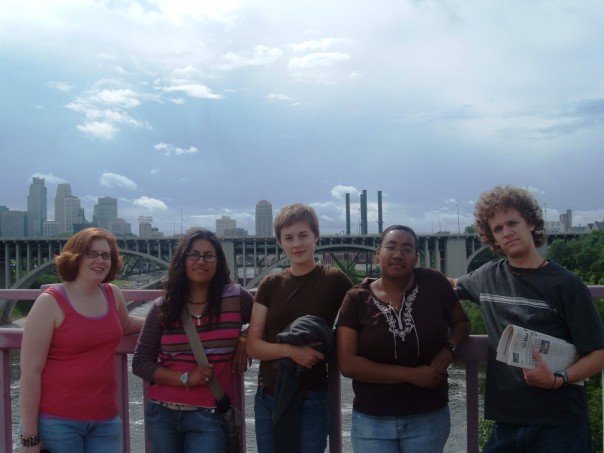 As the death toll rose to nine on Sunday evening, my thoughts turned to the recent events along Interstate 35W in Minneapolis. What most don’t know is that there is a small Mennonite community that gathers just blocks from where the 35W bridge collapsed. This emergent community is called Missio-Dei.
As the death toll rose to nine on Sunday evening, my thoughts turned to the recent events along Interstate 35W in Minneapolis. What most don’t know is that there is a small Mennonite community that gathers just blocks from where the 35W bridge collapsed. This emergent community is called Missio-Dei.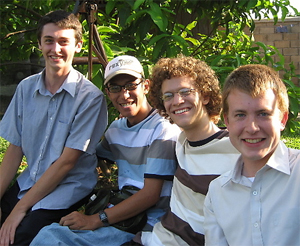 Living in Srok-Khmer (Cambodia) for three months as part of my Study/Service Term at Goshen College taught me a lot. As I worshiped and lived with my Christian host family within a mostly Buddhist nation, I learned how church is an extension of our being. Rarely did I have the chance to see my host brothers and sister from 5-9pm, because they were always at church.
Living in Srok-Khmer (Cambodia) for three months as part of my Study/Service Term at Goshen College taught me a lot. As I worshiped and lived with my Christian host family within a mostly Buddhist nation, I learned how church is an extension of our being. Rarely did I have the chance to see my host brothers and sister from 5-9pm, because they were always at church. For just a nickel, you can free a child of intestinal worms for six months.
For just a nickel, you can free a child of intestinal worms for six months. According to Good, the combination of a warm climate and significant amounts of impoverished persons creates a breeding ground for worms. “Studies in Ecuador have shown that in the mountain areas about 80% of the children are affected,” Good said. “In Zanzibar, off the coast of Tanzania, the infection rate is above 99%.”
According to Good, the combination of a warm climate and significant amounts of impoverished persons creates a breeding ground for worms. “Studies in Ecuador have shown that in the mountain areas about 80% of the children are affected,” Good said. “In Zanzibar, off the coast of Tanzania, the infection rate is above 99%.” Good encourages people to eat foods similar to those who live in areas where disease is widespread. “It is our responsibility to eat in a way that is simple yet healthy, and avoids the harmful aspects of the typical American diet, which leads to diseases of affluence. We should also use foods that are less costly, giving the opportunity to contribute one’s savings to programs that feed the world’s hungry.”
Good encourages people to eat foods similar to those who live in areas where disease is widespread. “It is our responsibility to eat in a way that is simple yet healthy, and avoids the harmful aspects of the typical American diet, which leads to diseases of affluence. We should also use foods that are less costly, giving the opportunity to contribute one’s savings to programs that feed the world’s hungry.”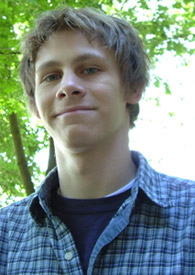 My life’s been a little different in the past few months. And it’s kind of weird saying that now — that it’s different. But it really is. In a lot of ways, so many ways that I don’t think I could really begin to explain it all. I guess I just needed to get away. I needed to go somewhere and think about things, to distance myself from all that I’ve known and force myself into a new place, both literally and figuratively.
My life’s been a little different in the past few months. And it’s kind of weird saying that now — that it’s different. But it really is. In a lot of ways, so many ways that I don’t think I could really begin to explain it all. I guess I just needed to get away. I needed to go somewhere and think about things, to distance myself from all that I’ve known and force myself into a new place, both literally and figuratively. I’ve also compared it to waking up alone in the woods and having no idea where to go. Yes, that sounds a little scary. And it is. I don’t see how it wouldn’t be. But when you slow down and purposely push everything out of the way that distances you from pain, suffering, emptiness and meaninglessness that seems to weasel its way into every aspect of life, that’s what it feels like. It feels like you’ve just woken up and looked around and realized that you have no idea where you are. And that you don’t even know how long it will take ’til you get to somewhere familiar.
I’ve also compared it to waking up alone in the woods and having no idea where to go. Yes, that sounds a little scary. And it is. I don’t see how it wouldn’t be. But when you slow down and purposely push everything out of the way that distances you from pain, suffering, emptiness and meaninglessness that seems to weasel its way into every aspect of life, that’s what it feels like. It feels like you’ve just woken up and looked around and realized that you have no idea where you are. And that you don’t even know how long it will take ’til you get to somewhere familiar. Since I’ve come to the Walnut Hill congregation here in Goshen, I’ve had nothing but this amazing experience revolving around amazing people. Time and time again I’ve tried to retreat back into my own little world of me, I, and me. Time and time again God thrusts more and more of the neatest people into my life. People that convince me there’s still so much good in the world, “and that it’s worth fighting for.â€
Since I’ve come to the Walnut Hill congregation here in Goshen, I’ve had nothing but this amazing experience revolving around amazing people. Time and time again I’ve tried to retreat back into my own little world of me, I, and me. Time and time again God thrusts more and more of the neatest people into my life. People that convince me there’s still so much good in the world, “and that it’s worth fighting for.â€ New Beginnings Community Church is in its third year of holding a children’s summer program. Members of the congregation have noticed the lack of activities for the children in their community and set out to make a difference. They set out to have a day camp, providing lunch, bible lessons, and plenty of arts and crafts. I have been truly blessed to have been a part of this ministry for the past three years, through the ups and the downs.
New Beginnings Community Church is in its third year of holding a children’s summer program. Members of the congregation have noticed the lack of activities for the children in their community and set out to make a difference. They set out to have a day camp, providing lunch, bible lessons, and plenty of arts and crafts. I have been truly blessed to have been a part of this ministry for the past three years, through the ups and the downs.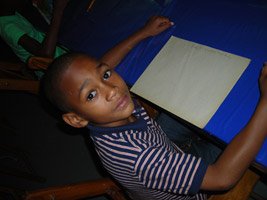 Unlike last summer, I encountered more and more off-the-cuff questions, which often catch me off guard. I wonder if they save them just for me to answer.
Unlike last summer, I encountered more and more off-the-cuff questions, which often catch me off guard. I wonder if they save them just for me to answer.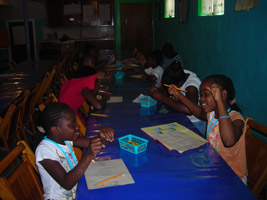 It is in sharing our situations and questions that we all benefit from the answers. It could be something that I have gone through already that may help my brother or sister sitting next to me. To begin this type of communication I must be available to listen. In the end, I’m glad that they feel comfortable in asking and challenging me with their questions, whether or not they always wait for an answer. Most of all, being there to give them an answer back makes me joyful and keeps me on my toes.
It is in sharing our situations and questions that we all benefit from the answers. It could be something that I have gone through already that may help my brother or sister sitting next to me. To begin this type of communication I must be available to listen. In the end, I’m glad that they feel comfortable in asking and challenging me with their questions, whether or not they always wait for an answer. Most of all, being there to give them an answer back makes me joyful and keeps me on my toes.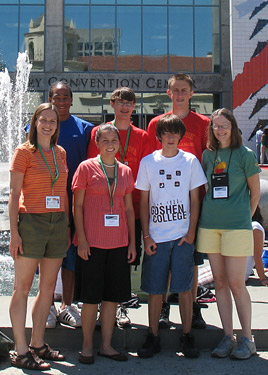 As I am writing this article and reflecting on the Mennonite Youth Convention in San Jose, I am turning a small polished rock over and over in my hands. Inspired by a song in the musical Godspell, during which a character puts a pebble in his shoe at the start of a journey, my youth leader instructed everyone in our group to chose a rock to accompany us to San Jose. Though we kept our rocks in our pockets instead of in our shoes, they were nonetheless notable traveling companions. Individually and together, we assigned meaning to our rocks throughout the trip.
As I am writing this article and reflecting on the Mennonite Youth Convention in San Jose, I am turning a small polished rock over and over in my hands. Inspired by a song in the musical Godspell, during which a character puts a pebble in his shoe at the start of a journey, my youth leader instructed everyone in our group to chose a rock to accompany us to San Jose. Though we kept our rocks in our pockets instead of in our shoes, they were nonetheless notable traveling companions. Individually and together, we assigned meaning to our rocks throughout the trip. Besides wrestling with my own calling, I witnessed the larger church struggle with its calling during convention. I’ve enjoyed looking at how the three conventions I’ve attended have built on each other. From being a welcoming body, to speaking up about our faith, the Mennonite church has grown to this theme of living the call. Living the call happens inside of every believer, in the body of Christ, and it overflows into our communities and the world.
Besides wrestling with my own calling, I witnessed the larger church struggle with its calling during convention. I’ve enjoyed looking at how the three conventions I’ve attended have built on each other. From being a welcoming body, to speaking up about our faith, the Mennonite church has grown to this theme of living the call. Living the call happens inside of every believer, in the body of Christ, and it overflows into our communities and the world. In my more cynical moods I question why I went to convention. I wonder about the hundreds of dollars and the hours spent fundraising that could have gone to needs right at home or in anywhere around the globe. Did I really need to be flying cross country, eating in delicious ethnic restaurants, and sleeping on a wonderfully plush bed? Well, no. Convention leaves a lot to be desired as far as stewardship of resources goes, but convention is invaluable for the way it unites the Mennonite Church. Gathering pools our resources, energizes us for our daily Christian walk, and gives us a better picture of the body of Christ. Convention gives us a sense of who we are, who we’d like to become in Christ, and how Christ can work through us for that transformation to occur.
In my more cynical moods I question why I went to convention. I wonder about the hundreds of dollars and the hours spent fundraising that could have gone to needs right at home or in anywhere around the globe. Did I really need to be flying cross country, eating in delicious ethnic restaurants, and sleeping on a wonderfully plush bed? Well, no. Convention leaves a lot to be desired as far as stewardship of resources goes, but convention is invaluable for the way it unites the Mennonite Church. Gathering pools our resources, energizes us for our daily Christian walk, and gives us a better picture of the body of Christ. Convention gives us a sense of who we are, who we’d like to become in Christ, and how Christ can work through us for that transformation to occur.